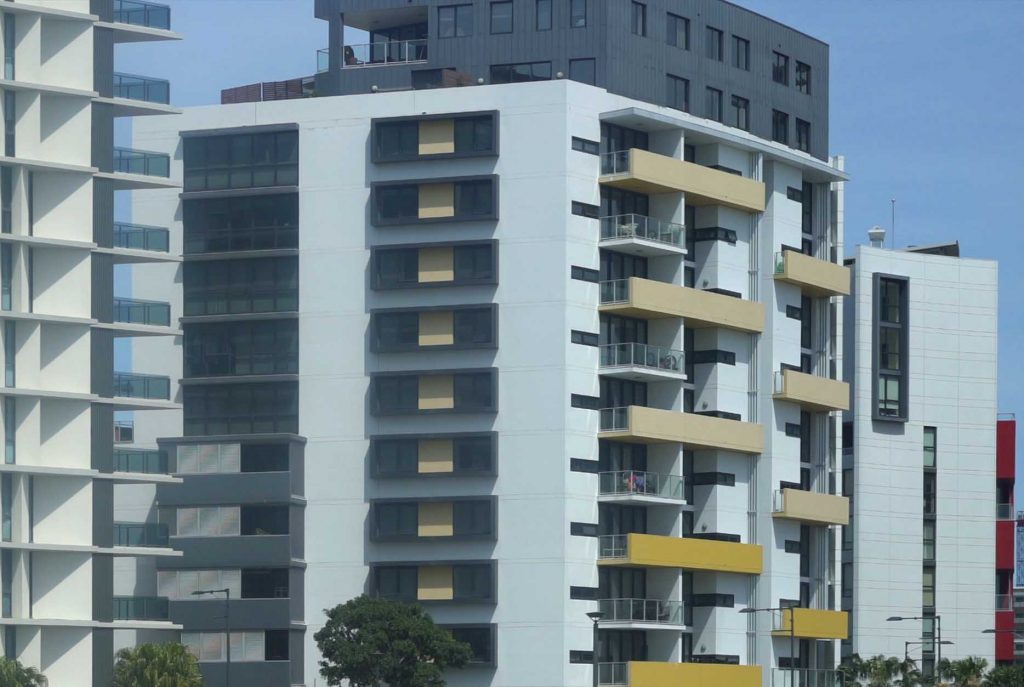We discuss the latest from the ABS on home prices.
Tag: ABS
Sydney and Melbourne Drive Property Price Rise of 2.4% In September Quarter – ABS
Residential property prices rose 2.4 per cent in the September quarter 2019, the strongest quarterly growth since the December quarter 2016, according to figures released today by the Australian Bureau of Statistics (ABS).

Sydney and Melbourne residential property prices recorded strong growth in the September quarter 2019. Property prices rose in Sydney (+3.6 per cent), Melbourne (+3.6 per cent), Brisbane (+0.7 per cent) and Hobart (+1.3 per cent).
House prices rose 4.0 per cent in Sydney and 3.7 per cent in Melbourne while attached dwelling prices rose 2.8 per cent in Sydney and 3.6 per cent in Melbourne.
ABS Chief Economist Bruce Hockman said, “The increase in property prices is in line with housing market indicators, particularly in Sydney and Melbourne. New lending commitments to households, auction clearance rates and sales transactions all improved during the September quarter.”
Residential property prices fell 3.7 per cent in the year to the September quarter 2019, with all capital cities except Hobart recording falls. This is a noticeable improvement on the 7.4 per cent annual fall in the June quarter 2019.
The total value of Australia’s 10.4 million residential dwellings rose by $189.9 billion to $6,869.4 billion in the September quarter 2019. The mean price of residential dwellings in Australia is now $660,800.
Whats Up With The Credit Flow Stats?
Something is late, very late this month. After the stock loans data from the RBA and APRA, both of which arrived for October on the last day of November, we would have expected to see the credit flow data from the ABS, about a week or so later.

Yet, digging into the upcoming releases, it looks like something will land on the 17th December. In addition, we are expecting significant revisions and changes as they continue to tweak the new reports.
They said:
From December 2019, this publication will be based on a new, improved data collection, called the Economic and Financial Statistics (EFS) collection. To better reflect the new content, the publication will be renamed Lending Indicators, Australia (cat. no. 5601.0). The first issue of the new publication will contain October 2019 data and will be released on 17 December 2019.
We know the October loan stock growth slowed to the lowest in many years, so the current theory doing the rounds is that households are repaying existing loans, and significant volumes of new loans are being written. Industry sources suggest to me that the refinance sector is buoyant thanks to the lower rates, but that is a net sum game. It is the new loans which we need to watch (after all if home prices are really taking off, per some of the indices, we would expect to see this trend), something which was pretty anemic last month.
And they also warn:
The changes to the concepts and classifications are significant. There is a high likelihood of revisions in future reporting periods as APRA, the ABS and the RBA continue to work with ADIs and other reporting institutions to ensure consistent reporting that aligns with instructions and definitions, and the impacts on seasonality can be measured. It is expected data quality will continue to improve over time.
Some New Data On Incomes
We look at the latest data from the ABS.
The median weekly earnings of employees rose by 2.3 per cent from August 2018 to August 2019, according to figures released today by the Australian Bureau of Statistics (ABS).
This increase, based on data collected with the Labour Force Survey, is consistent with increases observed in the Wage Price Index and Average Weekly Earnings.
Over the year to August 2019, the median weekly earnings of female
employees rose by 4.3 per cent, while male employee earnings rose 1.3
per cent.
Head of Labour Statistics at the ABS, Bjorn Jarvis, said: “Median weekly
earnings for male employees rose by less than that of female employees,
partly because of the growing number of males working part-time hours,
and the industries and occupations that men and women are working in.”
The figures also show gradual changes in working arrangements over time.
There was an increase in the proportion of employed people with access
to flexible working hours (34 per cent in August 2019, up from 32 per
cent in August 2015) and who regularly worked at home (32 per cent, up
from 30 per cent).
There was a decrease in the proportion of employed people who usually
worked overtime (34 per cent in August 2019, down from 36 per cent in
August 2015), or were on call or standby (22 per cent, down from 24 per
cent).
The Characteristics of Employment Survey is run each August, in
conjunction with the monthly Labour Force Survey. It collects
information on earnings, working arrangements and forms of employment
(including independent contracting), as well as trade union membership
and labour hire every second year.
Data, Data, Everywhere; Nor Any Drop To Drink! [Video]
The latest economic data confirms the pressures on households and the broader economy are real.
Dwelling Approvals Down – Another Nail?
The ABS data out today was weak, and a further signal of economic decline.
Dwelling Approvals Fall Again In October
Data from the ABS today shows that the number of dwellings approved fell 0.8 per cent in October 2019, in trend terms, and has fallen for 23 months. Private dwellings excluding houses also fell, by 0.5 per cent.
The seasonally adjusted estimate for total dwellings approved fell 8.1 per cent in October, driven by a 11.3 per cent decrease in private dwellings excluding houses. Private sector houses fell 7.0 per cent.
The value of total building approved fell 0.7 per cent in October, in trend terms, and has fallen for two months. The value of residential building fell 1.2 per cent, while non-residential building fell 0.2 per cent.
Number of total dwelling units
The trend estimate for Australia fell 0.8% in October.
Number of private sector houses
The trend estimate for private sector houses approved fell 0.9% in October.
Number of private sector dwellings excluding houses
The trend estimate for private sector dwelling units excluding houses fell 0.5% in October.
Value of new residential building
The trend estimate for the value of new residential building approved fell 1.3% in October and has fallen for eight months.
Value of alterations and additions to residential building
The trend estimate for the value of alterations and additions to residential building fell 0.1% in October and has fallen for seven months.
Value of non-residential building
The trend estimate for the value of non-residential building approved fell 0.2% in October after rising for 14 months.
Across the states and territories, dwelling approvals fell in the Northern Territory (11.1 per cent), New South Wales (4.6 per cent), Queensland (1.4 per cent), and Western Australia (1.0 per cent). Tasmania (4.5 per cent), South Australia (3.1 per cent), Australian Capital Territory (3.1 per cent), and Victoria (1.3 per cent) recorded increases, in trend terms.
Approvals for private sector houses fell in New South Wales (2.3 per cent), Victoria (1.7 per cent), Western Australia (0.2 per cent), and Queensland (0.1 per cent). South Australia rose 2.0 per cent, in trend terms.
New South Wales
The trend estimate for total number of dwelling units approved in New South Wales fell 4.6% in October. The trend estimate for the number of private sector houses fell 2.3% in October.
Victoria
The trend estimate for total number of dwelling units approved in Victoria rose 1.3% in October. The trend estimate for the number of private sector houses fell 1.7% in October.
Queensland
The trend estimate for total number of dwelling units approved in Queensland fell 1.4% in October. The trend estimate for the number of private sector houses fell 0.1% in October.
South Australia
The trend estimate for total number of dwelling units approved in South Australia rose 3.1% in October. The trend estimate for the number of private sector houses rose 2.0% in October.
Western Australia
The trend estimate for total number of dwelling units approved in Western Australia fell 1.0% in October. The trend estimate for the number of private sector houses fell 0.2% in October.
Time To Build Sandcastles! [Video]
We review the latest ABS construction work done data. The biggest fall in 18 years!
Construction Work Done Falls Again In September
The ABS released their preliminary data today. Tasmania apart, construction chain measures continue to fall. Trend estimate for residential building work done fell 3.0% this quarter and has fallen for four quarters.

- The trend estimate for total construction work done fell 1.6% in the September quarter 2019.
- The seasonally adjusted estimate for total construction work done fell 0.4% to $50,849.7m in the September quarter.
- The trend estimate for total building work done fell 1.8% in the September quarter 2019.
- The trend estimate for non-residential building work done rose 0.2% and residential building work fell 3.0%.
- The seasonally adjusted estimate of total building work done fell 0.5% to $29,703.6m in the September quarter.
- The trend estimate for engineering work done fell 1.1% in the September quarter.
- The seasonally adjusted estimate for engineering work done fell 0.2% to $21,146.2m in the September quarter.
Trend percentage change: Total construction
The trend estimate for total construction work done fell 1.6% this quarter and has fallen for five quarters.
Trend percentage change: Engineering
The trend estimate for engineering construction work done fell 1.1% this quarter and has fallen for six quarters.
Trend percentage change: Building
The trend estimate for total building work done fell 1.8% this quarter and has fallen for four quarters.
Trend percentage change: Residential
The trend estimate for residential building work done fell 3.0% this quarter and has fallen for four quarters.
Trend percentage change: Non-residential
The trend estimate for non-residential building work done rose 0.2% this quarter and has risen for five quarters.
Chain volume measures – Trend estimates
New South Wales
Victoria
Construction work done in New South Wales has fallen for four quarters.
Construction work done in Victoria has fallen for four quarters.
Queensland
Western Australia
Construction work done in Queensland has fallen for six quarters.
Construction work done in Western Australia has fallen for eight quarters.
South Australia
Northern Territory
Construction work done in South Australia has fallen for five quarters.
Construction work done in the Northern Territory has fallen for eight quarters.
Tasmania
Australia Capital Territory
Construction work done in Tasmania has risen for seven quarters.
Construction work done in the Australian Capital Territory has fallen for four quarters.
Employment Looks Shaky In October [Video]
We review the latest data from the ABS, and the 19,000 FALL in jobs, the first for some time.
https://www.abs.gov.au/AUSSTATS/abs@.nsf/DetailsPage/6202.0Oct%202019?OpenDocument
